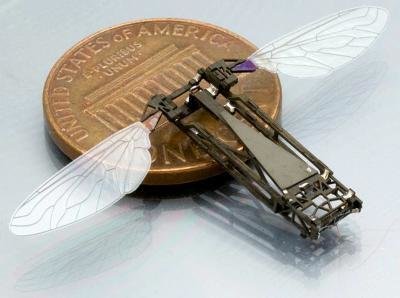
What could match the agility and grace of a butterfly? How about a butterfly robot?
Engineers at Johns Hopkins University are pointing their high-speed video cameras at the wings of butterflies to help design the next generation of flying robots.
The research, funded by U.S. defense agencies, is intended to create what are called "micro aerial vehicles," or MAVs - bug-sized aircrafts that could aid in the reconnaissance, search-and-rescue, and environmental monitoring missions that typically put human lives at risk.
"For military missions in particular, these MAVs must be able to fly successfully through complex urban environments, where there can be tight spaces and turbulent gusts of wind," researcher Tiras Lin, an undergraduate at the university's Whiting School of Engineering, said in a written statement. "These flying robots will need to be able to turn quickly. But one area in which MAVs are lacking is maneuverability."
Lin and graduate student Lingxiao Zheng turned to a particularly elusive species of butterfly to do their research: painted ladies. The wings of these bright orange insects flap too fast for the naked eye to tell exactly how they're moving, so the students are resorting to high-resolution videocameras that capture 3,000 frames each second.
"Butterflies flap their wings about 25 times per second,” Lin said. “That’s why we had to take so many pictures.”
What have the photos shown? That butterflies and ice skaters have something in common. As Lin explained:
“Ice skaters who want to spin faster bring their arms in close to their bodies and extend their arms out when they want to slow down. These positions change the spatial distribution of a skater’s mass and modify their moment of inertia; this in turn affects the rotation of the skater’s body. An insect may be able to do the same thing with its body and wings.”
The scientists say they're hopeful that in addition to aiding MAV design, their research will be of interest to biologists who study insect flight.
For more on the advances being made in flying robot research, check out University of Pennsylvania's video of a freaky swarm of 'nano-quadrotors'.
